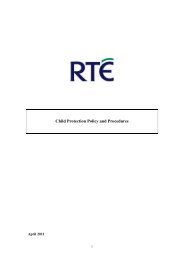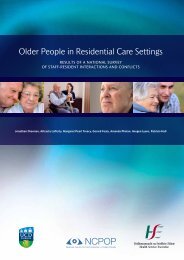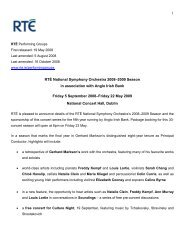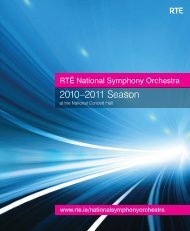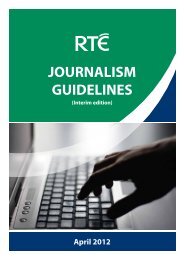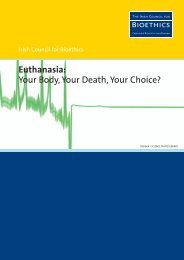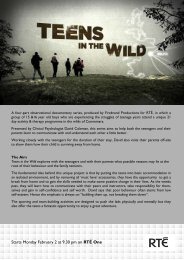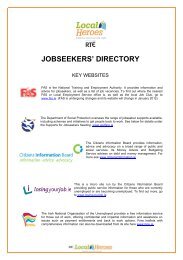From Leaving CertiFiCate to Leaving SChooL a Longitudinal Study ...
From Leaving CertiFiCate to Leaving SChooL a Longitudinal Study ...
From Leaving CertiFiCate to Leaving SChooL a Longitudinal Study ...
Create successful ePaper yourself
Turn your PDF publications into a flip-book with our unique Google optimized e-Paper software.
230<br />
<strong>From</strong> <strong>Leaving</strong> Certificate <strong>to</strong> <strong>Leaving</strong> School<br />
tion, particularly on the completion of the CAO forms. An important issue<br />
emerged in relation <strong>to</strong> the timing of guidance provision. Some students<br />
felt that the provision was ‘<strong>to</strong>o late’ in sixth year as they had already<br />
chosen their subjects and often their subject levels. The high proportion<br />
of students who regret taking particular subjects would also appear<br />
<strong>to</strong> point <strong>to</strong> a lack of sufficient guidance at the time of the transition<br />
<strong>to</strong> senior cycle.<br />
A large body of research in Ireland and internationally has focused<br />
on the fac<strong>to</strong>rs which influence young people’s post-school plans, with<br />
some theorists emphasising differential access <strong>to</strong> cultural and social resources<br />
(Bourdieu, 1986) while others focus on the rational assessment<br />
of the costs and benefits attached <strong>to</strong> different options (Erikson and Jonsson,<br />
1996). Other research has gone further by tracing the way in which<br />
the school can shape student decision-making (see, for example,<br />
McDonough, 1997). Research in Ireland has shown the complex interaction<br />
of school experience, family background and student aspirations in<br />
influencing the trajec<strong>to</strong>ries taken by young people from non-manual<br />
backgrounds (McCoy et al., 2010). The Post-Primary <strong>Longitudinal</strong> <strong>Study</strong><br />
provides a unique opportunity <strong>to</strong> capture the views of young people<br />
while they are making these decisions, rather than retrospectively as is<br />
usually the case, and these views can be located in the context of their<br />
entire second-level pathways as well as the nature of guidance provision<br />
in the school.<br />
Higher education was by far the dominant intended pathway among<br />
sixth year students in our study. In keeping with actual patterns of higher<br />
education entry (McCoy et al., 2010), the proportion intending <strong>to</strong> go on<br />
<strong>to</strong> higher education is strongly structured by social class background and<br />
by gender. Over and above the effect of individual social background,<br />
young people who attend working-class schools are less much likely <strong>to</strong><br />
intend <strong>to</strong> go <strong>to</strong> higher education than those in mixed or middle-class<br />
schools, even controlling for prior achievement and other fac<strong>to</strong>rs. This<br />
study indicates clear differences in the resources and information upon<br />
which young people from different social classes can draw. Middle-class<br />
students have access <strong>to</strong> the insider knowledge of siblings and other family<br />
members in finding out about colleges and courses. In schools with a<br />
more middle-class population and in more academically oriented schools



